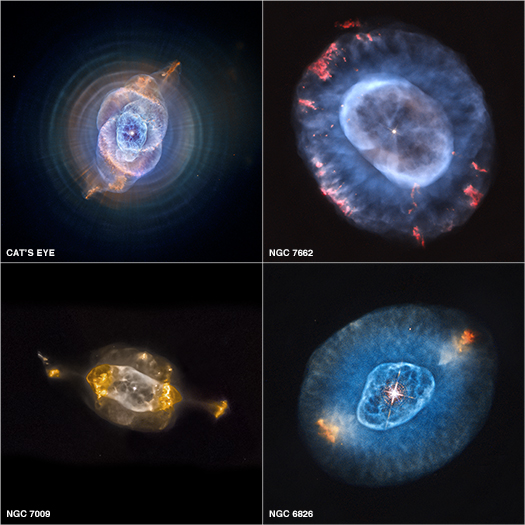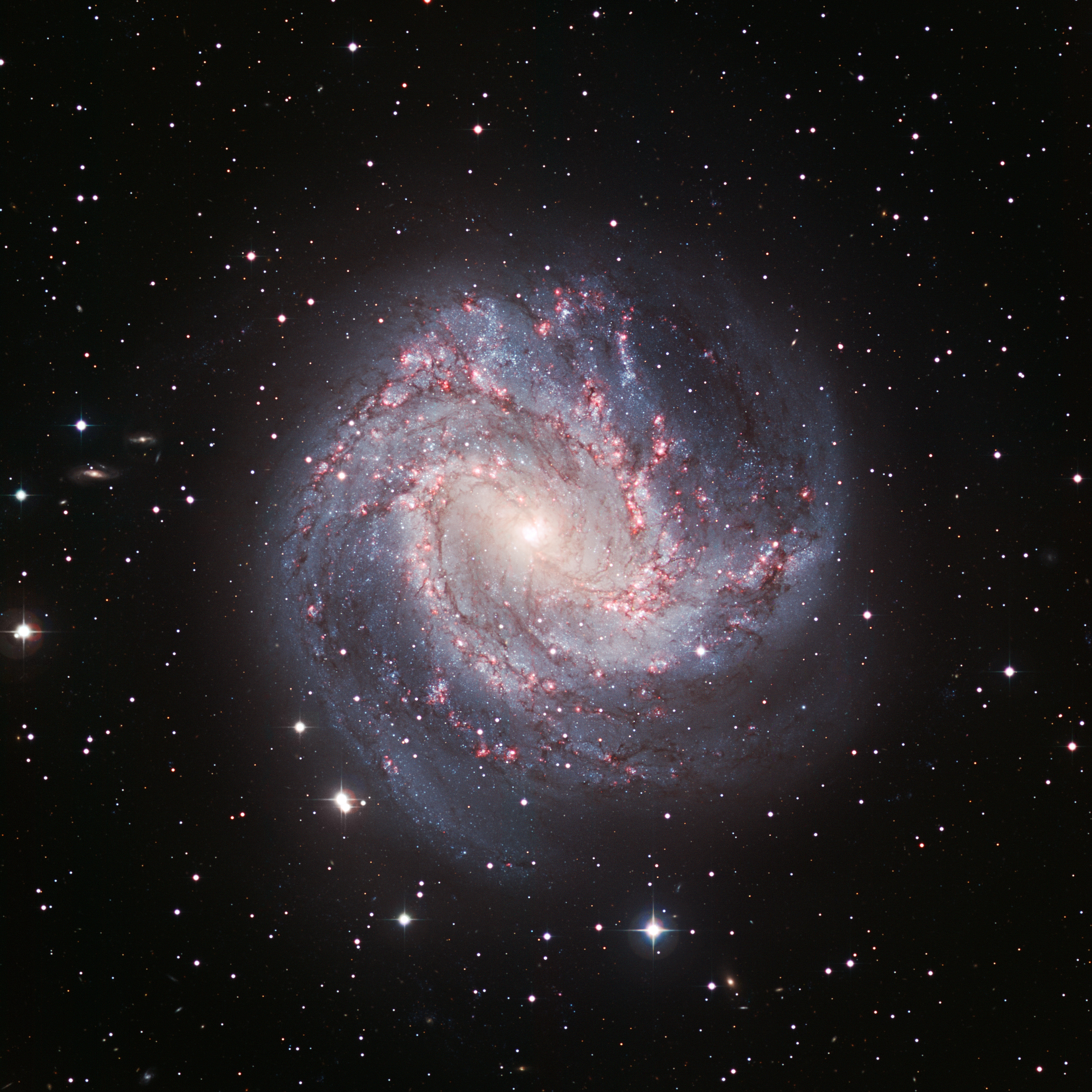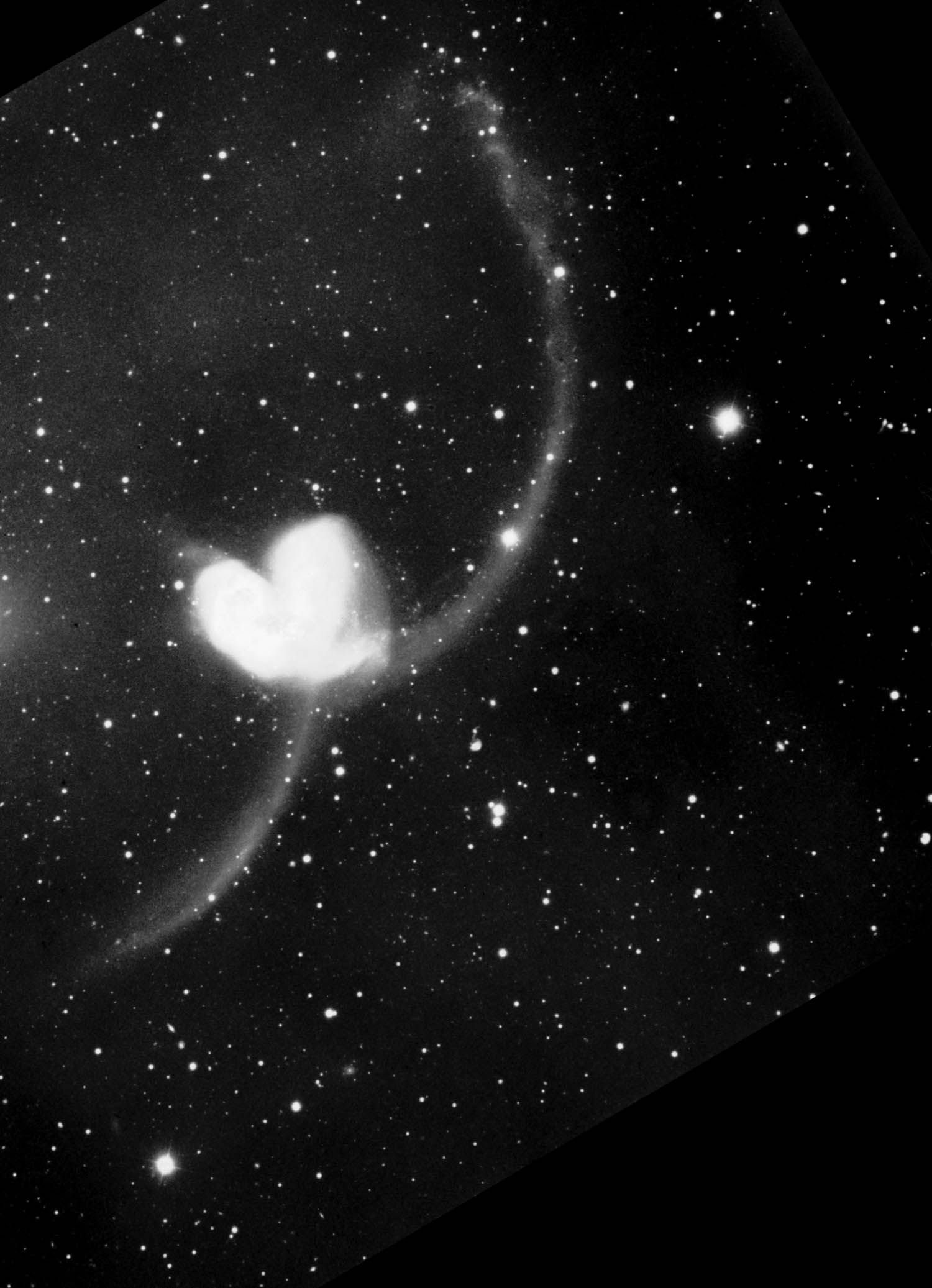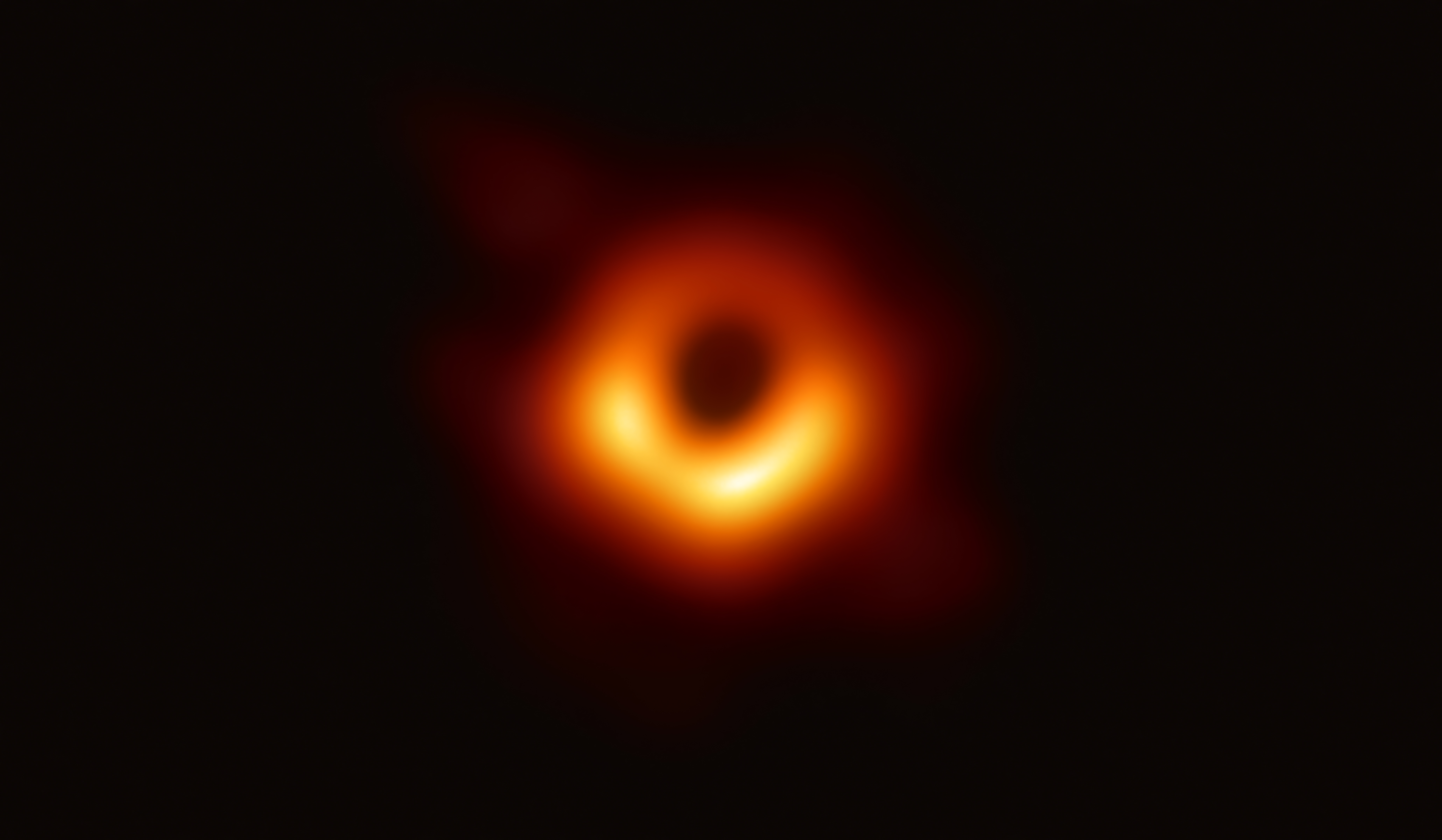|
NGC 5005
NGC 5005, also known as Caldwell 29, is an inclined spiral galaxy in the constellation Canes Venatici. The galaxy has a relatively bright nucleus and a bright disk that contains multiple dust lanes. The galaxy's high surface brightness makes it an object that is visible to amateur astronomers using large amateur telescopes. Distance measurements for NGC 5005 vary from 13.7 megaparsecs (45 million light-years) to 34.6 megaparsecs (113 million light-years), averaging about 20 megaparsecs (65 million light-years). Nucleus NGC 5005 contains a low ionization nuclear emission region (LINER) nucleus. LINER nuclei contain weakly ionized gas. The power source for the LINER emission has been debated extensively, with some researchers suggesting that LINERs are powered by active galactic nuclei that contain supermassive black holes and other researchers suggesting that LINERs are powered by star formation activity. X-ray emission X-ray observations of NGC 5005 have revealed that it c ... [...More Info...] [...Related Items...] OR: [Wikipedia] [Google] [Baidu] |
New General Catalogue
The ''New General Catalogue of Nebulae and Clusters of Stars'' (abbreviated NGC) is an astronomical catalog, astronomical catalogue of deep-sky objects compiled by John Louis Emil Dreyer in 1888. The NGC contains 7,840 objects, including galaxy, galaxies, star clusters and emission nebulae. Dreyer published two supplements to the NGC in 1895 and 1908, known as the ''Index Catalogues'' (abbreviated IC), describing a further 5,386 astronomical objects. Thousands of these objects are best known by their NGC or IC numbers, which remain in widespread use. The NGC expanded and consolidated the cataloguing work of William Herschel, William and Caroline Herschel, and John Herschel's ''General Catalogue of Nebulae and Clusters of Stars''. Objects south of the Celestial sphere, celestial equator are catalogued somewhat less thoroughly, but many were included based on observation by John Herschel or James Dunlop. The NGC contained multiple errors, but attempts to eliminate them were made by ... [...More Info...] [...Related Items...] OR: [Wikipedia] [Google] [Baidu] |
Active Galactic Nuclei
An active galactic nucleus (AGN) is a compact region at the center of a galaxy that has a much-higher-than-normal luminosity over at least some portion of the electromagnetic spectrum with characteristics indicating that the luminosity is not produced by stars. Such excess non-stellar emission has been observed in the radio, microwave, infrared, optical, ultra-violet, X-ray and gamma ray wavebands. A galaxy hosting an AGN is called an "active galaxy". The non-stellar radiation from an AGN is theorized to result from the accretion of matter by a supermassive black hole at the center of its host galaxy. Active galactic nuclei are the most luminous persistent sources of electromagnetic radiation in the universe, and as such can be used as a means of discovering distant objects; their evolution as a function of cosmic time also puts constraints on models of the cosmos. The observed characteristics of an AGN depend on several properties such as the mass of the central black hole, th ... [...More Info...] [...Related Items...] OR: [Wikipedia] [Google] [Baidu] |
UGC Objects
UGC may refer to: Science and technology * Universal gravitational constant G, in physics * Uppsala General Catalogue, an astronomical catalogue of galaxies * UGC, a codon for cysteine * Unique games conjecture, a conjecture in computational complexity Organisations * UGC (cinema operator), a European cinema chain, formerly Union Générale Cinématographique * UGC Fox Distribution, a former French-American film production company formed in 1995 * Union Graduate College, Schenectady, New York * United Grain Company, a Russian grain trading company based in Moscow * University Grants Commission (other) * University Grants Committee (other) * UnitedGlobalCom, former name of the cable TV operator Liberty Global * UnderGround Crips, an African American street gang mainly from Los Angeles, California Other * User-generated content, media content made by the general public * Urine Good Company, a fictional corporation in the musical ''Urinetown ''Urinetown: The Musi ... [...More Info...] [...Related Items...] OR: [Wikipedia] [Google] [Baidu] |
NGC Objects
The ''New General Catalogue of Nebulae and Clusters of Stars'' (abbreviated NGC) is an astronomical catalogue of deep-sky objects compiled by John Louis Emil Dreyer in 1888. The NGC contains 7,840 objects, including galaxies, star clusters and emission nebulae. Dreyer published two supplements to the NGC in 1895 and 1908, known as the ''Index Catalogues'' (abbreviated IC), describing a further 5,386 astronomical objects. Thousands of these objects are best known by their NGC or IC numbers, which remain in widespread use. The NGC expanded and consolidated the cataloguing work of William and Caroline Herschel, and John Herschel's '' General Catalogue of Nebulae and Clusters of Stars''. Objects south of the celestial equator are catalogued somewhat less thoroughly, but many were included based on observation by John Herschel or James Dunlop. The NGC contained multiple errors, but attempts to eliminate them were made by the ''Revised New General Catalogue'' (RNGC) by Jack W. ... [...More Info...] [...Related Items...] OR: [Wikipedia] [Google] [Baidu] |
LINER Galaxies
A low-ionization nuclear emission-line region (LINER) is a type of galactic nucleus that is defined by its spectral line emission. The spectra typically include line emission from weakly ionized or neutral atoms, such as O, O+, N+, and S+. Conversely, the spectral line emission from strongly ionized atoms, such as O++, Ne++, and He+, is relatively weak. The class of galactic nuclei was first identified by Timothy Heckman in the third of a series of papers on the spectra of galactic nuclei that were published in 1980. Demographics of LINER galaxies Galaxies that contain LINERs are often referred to as ''LINER galaxies''. LINER galaxies are very common; approximately one-third of all nearby galaxies (galaxies within approximately 20-40 Mpc) may be classified as LINER galaxies. Approximately 75% of LINER galaxies are either elliptical galaxies, lenticular galaxies, or S0/a-Sab galaxies ( spiral galaxies with large bulges and tightly wound spiral arms). LINERs ar ... [...More Info...] [...Related Items...] OR: [Wikipedia] [Google] [Baidu] |
Intermediate Spiral Galaxies
An intermediate spiral galaxy is a galaxy A galaxy is a system of stars, stellar remnants, interstellar gas, dust, dark matter, bound together by gravity. The word is derived from the Greek ' (), literally 'milky', a reference to the Milky Way galaxy that contains the Solar Sys ... that is in between the classifications of a barred spiral galaxy and an unbarred spiral galaxy. It is designated as SAB in the galaxy morphological classification system devised by Gerard de Vaucouleurs. Subtypes are labeled as SAB0, SABa, SABb, or SABc, following a sequence analogous to the Hubble sequence for barred and unbarred spirals. The subtype (0, a, b, or c) is based on the relative prominence of the central bulge and how tightly wound the spiral arms are. Examples References * Galaxy morphological types {{Spiral-galaxy-stub ... [...More Info...] [...Related Items...] OR: [Wikipedia] [Google] [Baidu] |
Galactic Tide
A galactic tide is a tidal force experienced by objects subject to the gravitational field of a galaxy such as the Milky Way. Particular areas of interest concerning galactic tides include galactic collisions, the disruption of dwarf or satellite galaxies, and the Milky Way's tidal effect on the Oort cloud of the Solar System. Effects on external galaxies Galaxy collisions Tidal forces are dependent on the gradient of a gravitational field, rather than its strength, and so tidal effects are usually limited to the immediate surroundings of a galaxy. Two large galaxies undergoing collisions or passing nearby each other will be subjected to very large tidal forces, often producing the most visually striking demonstrations of galactic tides in action. Two interacting galaxies will rarely (if ever) collide head-on, and the tidal forces will distort each galaxy along an axis pointing roughly towards and away from its perturber. As the two galaxies briefly orbit each other, ... [...More Info...] [...Related Items...] OR: [Wikipedia] [Google] [Baidu] |
NGC 5033
NGC 5033 is an inclined spiral galaxy located in the constellation Canes Venatici. Distance estimates vary from between 38 and 60 million light years from the Milky Way. The galaxy has a very bright nucleus and a relatively faint disk. Significant warping is visible in the southern half of the disk. The galaxy's relatively large angular size and relatively high surface brightness make it an object that can be viewed and imaged by amateur astronomers. The galaxy's location relatively near Earth and its active galactic nucleus make it a commonly studied object for professional astronomers. Nucleus NGC 5033 contains a Seyfert nucleus, a type of active galactic nucleus. Like many other active galactic nuclei, this galaxy's nucleus is thought to contain a supermassive black hole. The bright emission seen in visible light (as well as other wavebands) is partially produced by the hot gas in the environment around this black hole. Integral field spectroscopic observations ... [...More Info...] [...Related Items...] OR: [Wikipedia] [Google] [Baidu] |
Active Galactic Nucleus
An active galactic nucleus (AGN) is a compact region at the center of a galaxy that has a much-higher-than-normal luminosity over at least some portion of the electromagnetic spectrum with characteristics indicating that the luminosity is not produced by stars. Such excess non-stellar emission has been observed in the radio, microwave, infrared, optical, ultra-violet, X-ray and gamma ray wavebands. A galaxy hosting an AGN is called an "active galaxy". The non-stellar radiation from an AGN is theorized to result from the accretion of matter by a supermassive black hole at the center of its host galaxy. Active galactic nuclei are the most luminous persistent sources of electromagnetic radiation in the universe, and as such can be used as a means of discovering distant objects; their evolution as a function of cosmic time also puts constraints on models of the cosmos. The observed characteristics of an AGN depend on several properties such as the mass of the central black ... [...More Info...] [...Related Items...] OR: [Wikipedia] [Google] [Baidu] |
X-ray
X-rays (or rarely, ''X-radiation'') are a form of high-energy electromagnetic radiation. In many languages, it is referred to as Röntgen radiation, after the German scientist Wilhelm Conrad Röntgen, who discovered it in 1895 and named it ''X-radiation'' to signify an unknown type of radiation.Novelline, Robert (1997). ''Squire's Fundamentals of Radiology''. Harvard University Press. 5th edition. . X-ray wavelengths are shorter than those of ultraviolet rays and longer than those of gamma rays. There is no universally accepted, strict definition of the bounds of the X-ray band. Roughly, X-rays have a wavelength ranging from 10 nanometers to 10 picometers, corresponding to frequencies in the range of 30 petahertz to 30 exahertz ( to ) and photon energies in the range of 100 eV to 100 keV, respectively. X-rays can penetrate many solid substances such as construction materials and living tissue, so X-ray radiography is widely used in medi ... [...More Info...] [...Related Items...] OR: [Wikipedia] [Google] [Baidu] |
Star Formation
Star formation is the process by which dense regions within molecular clouds in interstellar space, sometimes referred to as "stellar nurseries" or "star-forming regions", collapse and form stars. As a branch of astronomy, star formation includes the study of the interstellar medium (ISM) and giant molecular clouds (GMC) as precursors to the star formation process, and the study of protostars and young stellar objects as its immediate products. It is closely related to planet formation, another branch of astronomy. Star formation theory, as well as accounting for the formation of a single star, must also account for the statistics of binary stars and the initial mass function. Most stars do not form in isolation but as part of a group of stars referred as star clusters or stellar associations. Stellar nurseries Interstellar clouds A spiral galaxy like the Milky Way contains stars, stellar remnants, and a diffuse interstellar medium (ISM) of gas and dust. The inte ... [...More Info...] [...Related Items...] OR: [Wikipedia] [Google] [Baidu] |
Supermassive Black Hole
A supermassive black hole (SMBH or sometimes SBH) is the largest type of black hole, with its mass being on the order of hundreds of thousands, or millions to billions of times the mass of the Sun (). Black holes are a class of astronomical objects that have undergone gravitational collapse, leaving behind spheroidal regions of space from which nothing can escape, not even light. Observational evidence indicates that almost every large galaxy has a supermassive black hole at its center. For example, the Milky Way has a supermassive black hole in its Galactic Center, corresponding to the radio source Sagittarius A*. Accretion of interstellar gas onto supermassive black holes is the process responsible for powering active galactic nuclei (AGNs) and quasars. Two supermassive black holes have been directly imaged by the Event Horizon Telescope: the black hole in the giant elliptical galaxy Messier 87 and the black hole at the Milky Way’s center. Description Supermassive black ... [...More Info...] [...Related Items...] OR: [Wikipedia] [Google] [Baidu] |







